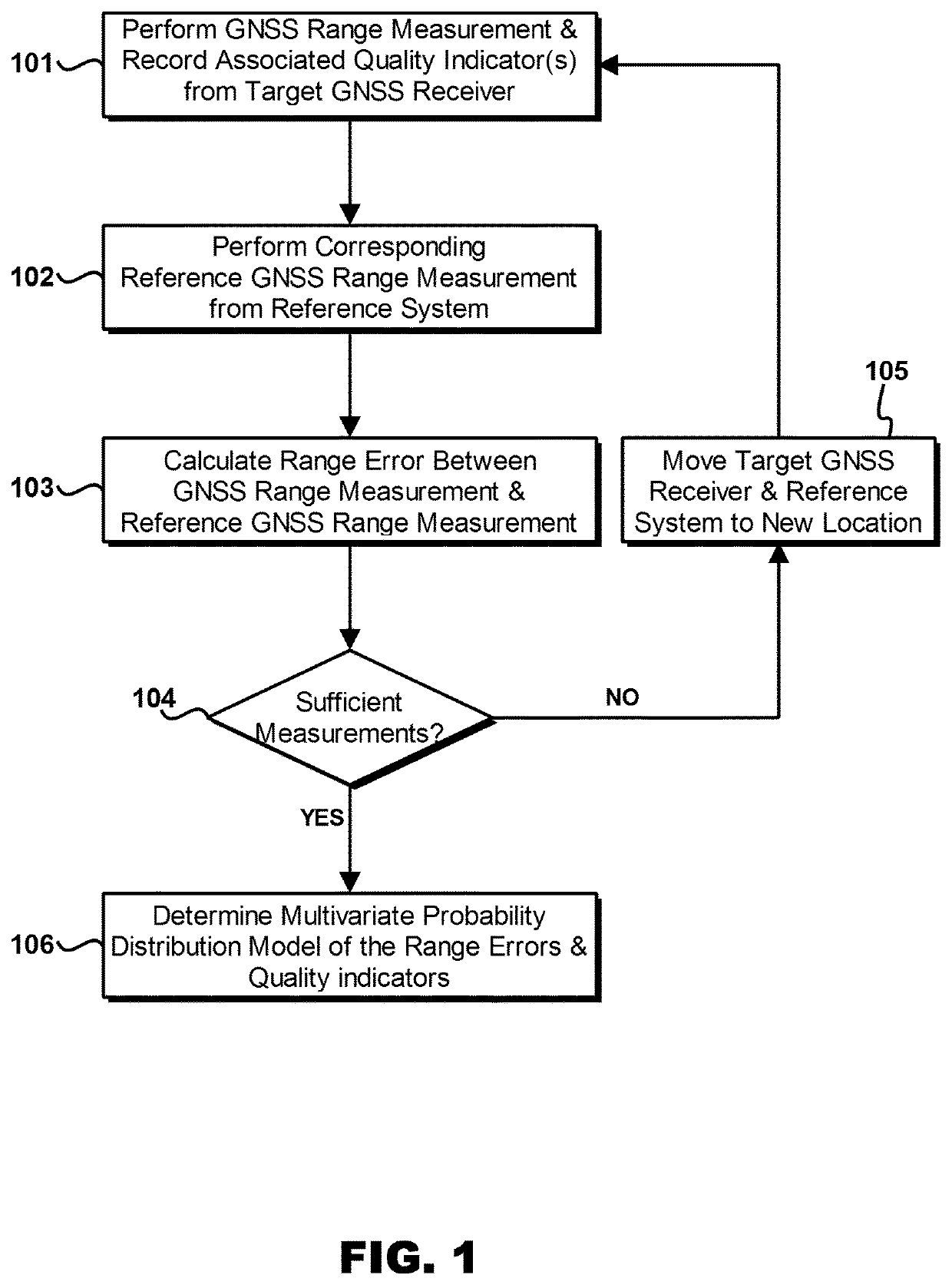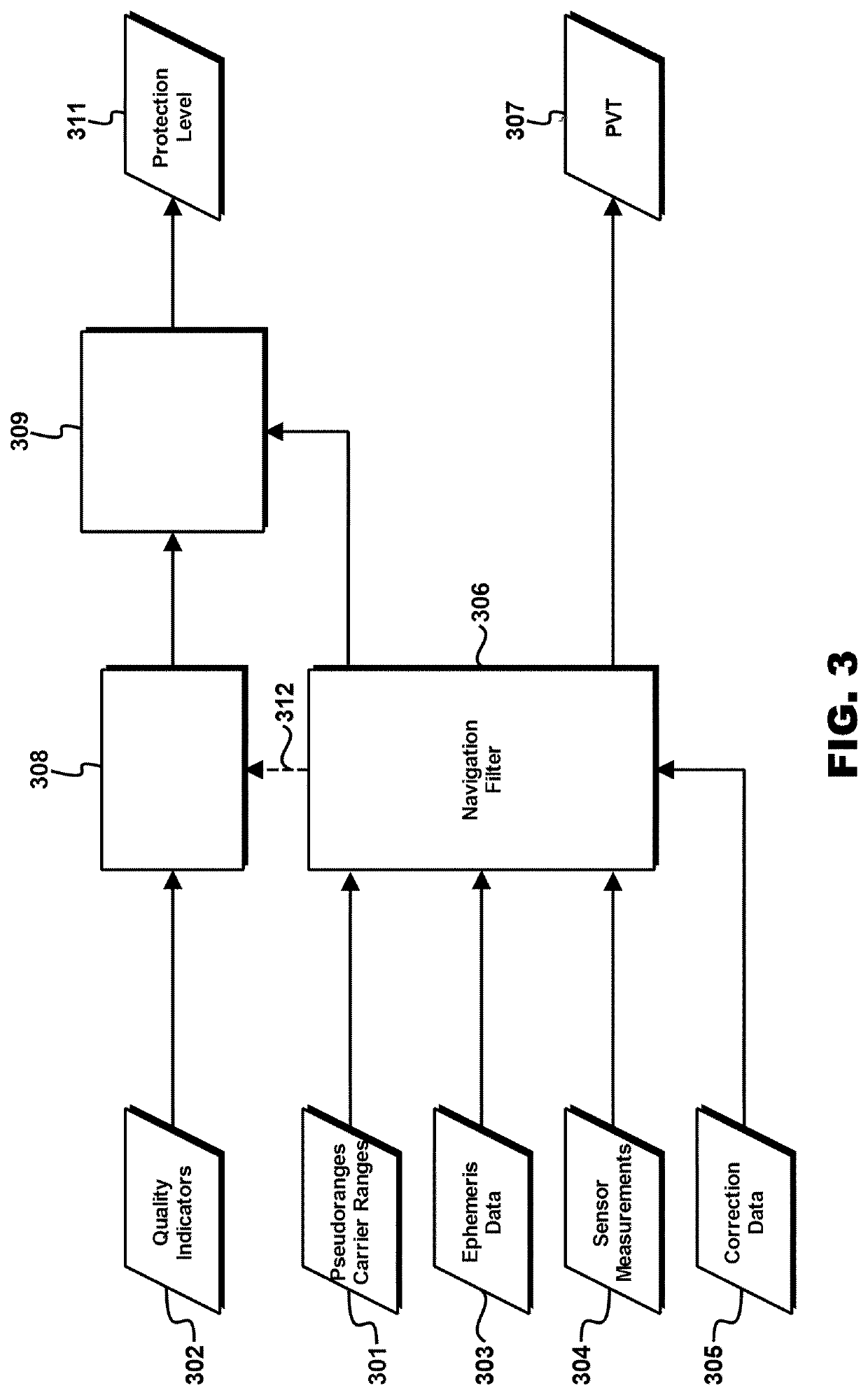GNSS receiver protection levels
- Summary
- Abstract
- Description
- Claims
- Application Information
AI Technical Summary
Benefits of technology
Problems solved by technology
Method used
Image
Examples
Embodiment Construction
[0044]FIG. 1 is a flow chart illustrating the steps of a measurement campaign to determine a multivariate probability distribution model between the measurement error of a GNSS receiver and one or more indicators of GNSS measurement quality.
[0045]A GNSS receiver is typically able to make measurements including pseudorange and carrier-phase measurements, based on the signals it receives from the satellites in the GNSS. In addition to these measurements, the GNSS receiver may additionally provide measurement quality indicators, which may include signal parameters and / or performance indicators. Examples of signal parameters include carrier-to-noise ratio or density (C / N0), carrier-to-noise ratio variability, an estimate of the carrier phase and pseudorange variances as well as multipath deviation. Examples of performance indicators include loss-of-lock (cycle slip) detectors and counters for code lock time and phase lock time. The accuracy of GNSS measurements made by a GNSS receiver m...
PUM
 Login to view more
Login to view more Abstract
Description
Claims
Application Information
 Login to view more
Login to view more - R&D Engineer
- R&D Manager
- IP Professional
- Industry Leading Data Capabilities
- Powerful AI technology
- Patent DNA Extraction
Browse by: Latest US Patents, China's latest patents, Technical Efficacy Thesaurus, Application Domain, Technology Topic.
© 2024 PatSnap. All rights reserved.Legal|Privacy policy|Modern Slavery Act Transparency Statement|Sitemap



